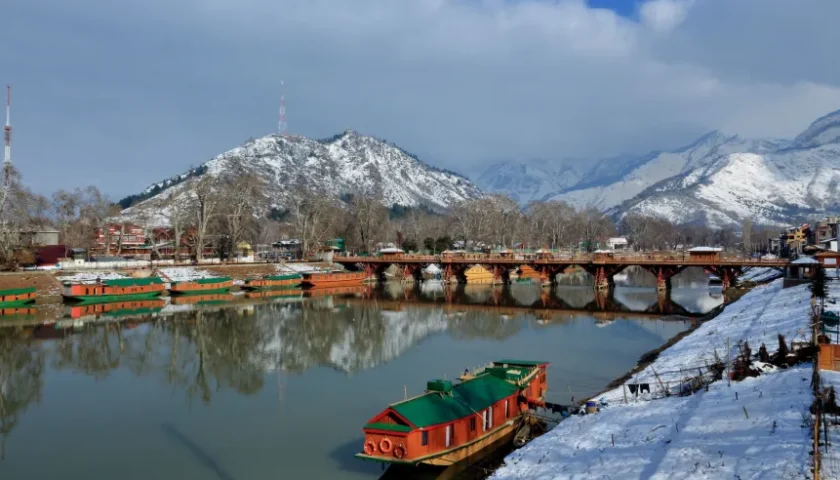Not so long ago Wular in Bandipore was considered to be one of the largest freshwater lakes in Aisa, acting as a natural flood reservoir for Jhelum River to prevent floods in the Valley.
Today, the lake is however gasping for survival as years of encroachment and siltation are posing a mortal threat to its existence.
Notwithstanding these challenges, the government continues to sit over implementation of an ambitious multi-crore project to dredge the heavily silted Wular, a key component of lake’s massive conservation project, and restore its lost glory.
In October last year, the state government cleared an Indo-Sino company to dredge Wular, more than six year after Rs 389 crore project for conservation of the lake was approved.
The project included retrieving the encroached area of the lake and its catchment area, water management and dredging to recreate its holding capacity.
Conservation of the water body requires felling an estimated 21 lakh tress, mostly willows, inside the lake.
The union ministry of environment approved Rs 120 crore under the project out of which Rs 60 crore were released to the state government. “Of Rs 60 crore almost Rs 45 crore were spent on catchment area treatment and demarcation of the original area of the lake,” an official said, adding all the works including dredging of one sq km of the lake were undertaken locally.
The previous government however decided that entire project should be carried out in “composite contract” under which felling of trees and dredging of the lake, which is presently maintained by Wular Conservation & Management Authority (WUCMA), was to be handed over to the same contractor.
Accordingly, bids were invited but only the Indo-Sino company showed interest, ultimately bagging the contract.
But some members of the ministerial panel which had approved the project expressed reservations over the panel’s recommendations and eventually the entire project was put on halt.
“We are waiting for the government to take a fresh call on implementation of the project. “It (the project) has been put in cold storage,” said the official. The lake is now dying a slow death owing to years of neglect by successive regimes. Not only has its water holding capacity fallen due to massive siltation, its area has also shrunk, mainly due to encroachment. A study of the lake by Wetlands International found that original area of the Lake was actually 217.8 square kilometres, which included 58 square kilometres of associated marshes. The total area was reduced from 157.74 square kilometres in 1911 to 86.71 square kilometres in 2007. Overall there was reduction in the lake area by 45% mainly due to conversion of parts of the lake for agriculture and willow tree plantation.
“The condition of the lake has gone from bad to worse. At some places it looks like a marshy land. The project is crucial to its conservation and restoring its lost glory,” said the official.
Another official raised questions over “sincerity” of the government in implementing the project.
“This project was started on a high note and lot of pomp and show. We need to ask why has its implementation slowed down first and has now been completely halted,” the official said.
Nestled between mountains, Wular acts as a huge absorption basin for floodwaters and maintains a balance in the hydrographic system of Kashmir. The lake with its associated wetlands also comprises an important habitat for migratory water birds within Central Asian Flyway and supports rich biodiversity. It is also a major fishing resource of the Kashmir valley. In recognition of its immense ecological and socio-economic importance, the Wular was designated as a wetland of international importance under the Ramsar Convention in 1990. But today it stands neglected and craving for attention.
Wular has lost its primary function of flood absorption basin for Jhelum




